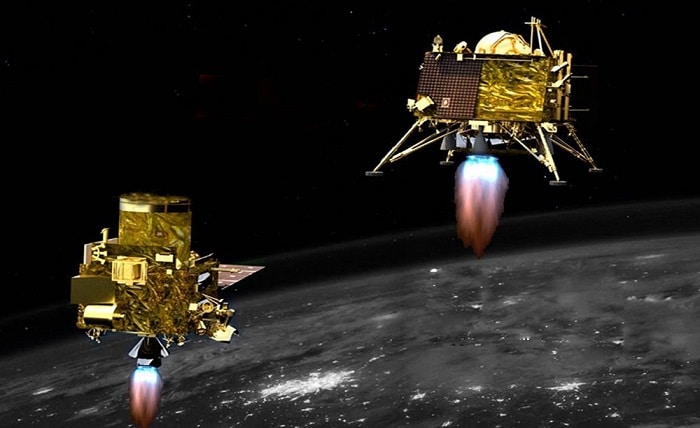Chandrayaan: All India’s Amazing Journeys to the Moon

The exploration of space has always captivated human imagination, and one of the remarkable achievements in this field is the Indian Space Research Organisation’s (ISRO) Chandrayaan mission. Chandrayaan, meaning “moon vehicle” in Sanskrit, is India’s first lunar exploration program. In this article, we will delve into the fascinating journey of Chandrayaan and the significant discoveries it has made on the lunar surface.
The Chandrayaan Mission Begins
The Chandrayaan program was initiated by ISRO to explore the Moon’s surface and gather valuable scientific data. It aimed to enhance our understanding of the Moon’s origin, evolution, and the presence of water ice.
Chandrayaan-1: The Maiden Voyage
Launch and Objectives
Chandrayaan-1, launched in October 2008, carried a suite of scientific instruments to study the lunar surface. Its primary objectives were to create a detailed three-dimensional map of the Moon, analyze the mineral composition, and search for water molecules.
Instruments and Payload
The spacecraft was equipped with various instruments, including a high-resolution remote sensing camera, a moon mineralogy mapper, and a radar instrument to map the polar regions. These instruments provided crucial insights into the Moon’s geology and helped identify potential landing sites for future missions.
Major Discoveries
During its ten-month mission, Chandrayaan-1 made several significant discoveries. It detected the presence of water molecules on the lunar surface, particularly in the polar regions. This discovery revolutionized our understanding of the Moon’s geology and potential resources for future space exploration.
Chandrayaan-2: A Giant Leap
Mission Overview
Chandrayaan-2, launched in July 2019, was a more ambitious mission that aimed to land a rover on the lunar surface. It consisted of an orbiter, a lander named Vikram, and a rover called Pragyan.
Vikram Lander and Pragyan Rover
The Vikram lander carried the Pragyan rover, which was designed to traverse the lunar surface and conduct scientific experiments. The mission’s primary objective was to make a soft landing near the lunar south pole, a region with high scientific interest due to its potential water ice deposits.
The South Pole Landing
Although the Vikram lander experienced a communication loss during the final descent, Chandrayaan-2 still achieved a significant milestone by reaching the lunar south pole region. The orbiter continues to function and provides valuable data on the Moon’s environment.
Scientific Contributions
Chandrayaan-2 orbiter is equipped with advanced instruments to study the lunar surface, atmosphere, and cosmic rays. It has contributed to our understanding of lunar topography, mineralogy, and the presence of water ice. The mission’s findings are crucial for planning future manned missions and lunar habitation.
Chandrayaan-3: Aiming Higher
Mission Scope and Objectives
Chandrayaan-3, currently under development, aims to build upon the successes of its predecessors. It will focus on improving landing capabilities and conducting more extensive scientific investigations on the lunar surface.
Technological Upgrades
ISRO plans to incorporate technological advancements into Chandrayaan-3, including enhanced landing systems and upgraded scientific instruments. These upgrades will enable more precise data collection and improve our understanding of the Moon’s geology and resources.
Future Exploration Plans
Chandrayaan-3 is part of ISRO’s long-term vision for lunar exploration. It will serve as a stepping stone for future manned missions and the establishment of a sustainable human presence on the Moon. ISRO aims to collaborate with other space agencies to further enhance our knowledge of Earth’s celestial neighbor.
Read more about: kayo-anime
The Significance of Chandrayaan Missions
Advancing Lunar Science
The Chandrayaan missions have significantly contributed to lunar science by providing invaluable data about the Moon’s composition, geology, and potential resources. This knowledge is essential for planning future missions and potential human colonization.
International Collaborations
ISRO’s Chandrayaan missions have fostered international collaborations with space agencies worldwide. Sharing resources, expertise, and data has accelerated scientific progress and paved the way for collaborative space exploration endeavors.
Inspiring the Next Generation
The Chandrayaan missions have inspired countless young minds to pursue careers in science, technology, engineering, and mathematics (STEM). They have sparked curiosity and ignited a passion for space exploration among students, encouraging them to dream big and push the boundaries of human knowledge.
Challenges and Future Prospects
The exploration of space poses numerous challenges, including technological hurdles, budget constraints, and the need for international cooperation. However, with each mission, ISRO continues to overcome these obstacles and push the boundaries of scientific exploration. The future prospects for lunar exploration are promising, with plans for manned missions and the establishment of lunar bases in the coming decades.
Conclusion
The Chandrayaan missions have not only elevated India’s position in the global space arena but also contributed significantly to our understanding of the Moon. Through Chandrayaan-1 and Chandrayaan-2, ISRO has made groundbreaking discoveries, including the detection of water molecules on the lunar surface. With Chandrayaan-3 on the horizon, the future of lunar exploration looks even more promising.




